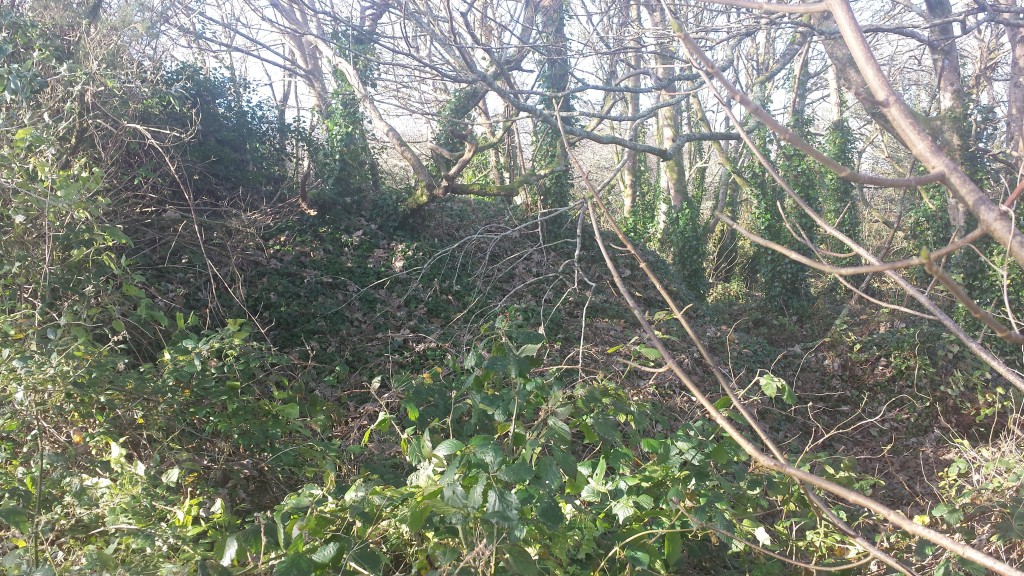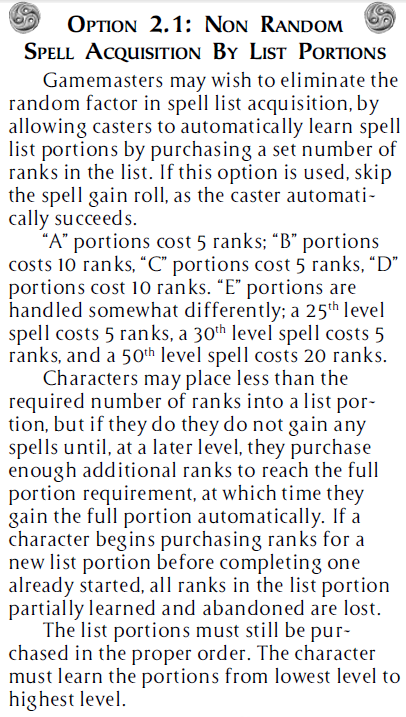I have spent most of this month telling you how Rolemaster spell casters are streets ahead of their D&D couterparts… wait until you see a Rolemaster figher in action.
My memories of playing D&D fighters was something like:
Round 1, Kobold hits you, take damage, roll to hit, roll damage, kobold is dead.
Round 2, Kobold misses you, roll to hit, roll damage, kobold is dead.
Two to one odds, kobolds vs first or second level fighter and the kobolds have little or no chance. Try that in Rolemaster and I wouldn’t like to say which way the fight is going to go. It is not that Kobolds are dangerous it is just as soon as anyone starts waving swords around people are going to get hurt, that is just the way of things.
One of the really nice things about Rolemaster combat is that a 1st level character can take on a 10th level one and the result is not a forgone conclusion. The rolemaster rules have two mechanisms to faciitate this. the first is the ‘open ended roll’.
Open Ended Rolls
Ever since I played D&D there was always some rule in place that if you rolled a 20 on your to hit then you got some sort of bonus be it double damage or you did max damage. Open ended rolls are Rolemasters answer to that. As RM is played with D100 and not a D20 the magic starts when you roll a 96+. You then get to roll another D100 and add the result. This can go on forever if required. There is a bad version of this and roll 01-04 and you have to roll again and deduct the second dice roll. Once the direction is set, open ended up or open ended down then that is set. So roll and 01 and you are going downwards, roll a 96 and that is another open ended roll so you roll again but the result continues going downwards. If the third rol was a 50 the result would be 01-(96+50) = -145. That is never going to be a good result.
In RM the attack roll and damage roll are one and the same so an exceptionally high roll not only is going to guarantee the hit but also do pretty good damage. Now anyone who has heard anything about any flavour of RM knows about the critical tables. There is a second D100 roll that you may get if your attack was good enough and that is your critical. For the most part these range from A to E with E being the most likely to kill you.
The way that the combat system works (Arms Law) is that with light armour you are hard to hit but take a lot of damage and more severe critical, with heavy armour you are easier to hit but take little damage and less severe criticals. An A or B critical will not kill you even on a roll of 100 but they could knock you out cold. An E critical will probably kill on a roll of 80+. Delivering E criticals is good taking them regularly is not good.
To tell you more about critical, they often give the location specific details, the gorey details of the strike and additional damage. Slashing and puncturing weapons may cause bleeding, crushing weapons are more likely to stun you, you can have muscles and tendons slashed and lose the use of your weapon or shield arm and so on.
Being stunned is really bad, you cannot attack when stunned*, you are easier to hit and find it harder to parry and to carry out manouveurs.
So lets glance back to our 2 on 1 kobold fight and each kobold has a 1 in 20 chance of getting that open ended attack roll and as there are two of them that is a 10% chance that one of them at least will be lucky. Should one of our lucky kobolds manage to get a critical strike in and stun the fighter then he is immediately on the defensive. he becomes easier to hit, cannot easily attack back and finds it difficult to defend effectively, our kobolds suddenly have the upper hand regardless of what level you are and that is something that almost never happens in D&D.
Creating a fighter in RM is just a case of picking that profession and then buying the skills that you want. Moving in armour is a skill so you can pick the type of armour that you fancy, weapons are learned individually and then there are lots of other combat skills that allow you to quickdraw, blind fight, reverse stroke, dodge opponents attacks and a multitude more. It is very easy to build your vision.
Fighters are balanced in the game mechanics by a system of deminishing returns on skills so the more skill ranks you buy eventually they start to add less to your skill bonuses. Th emore different classes of weapon that you know the more expensive the skills are to buy so it is harder to be really good with swords, bows, polearms, crushing weapons like maces and thrown weapons. You could of course be that jack of trades but you would pay for it elsewhere in your character development.
Now just like the spell casters there is more to the RM fighters than sword, shield, platemail and big muscles. Next time I will highlight some of the features that can make a fighter a really scarey foe.
* There is a skill available to learn called stunned manouveur that allows you to attempt to overcome the effects of stun but it depends on how hard you were hit and good you are at the skill.




 When you are converting the significant NPCs from the Forgotten Realms source materials then as a rule of thumb you should multiply all levels by about 1.5 so that a 12th level fighter in the D&D rules such as Helm Dwarf-friend, Master of Sundabar would be an 18th level warrior in Rolemaster. For a more powerful game you would make the NPCs higher level but as a rule x1.5 works pretty well.
When you are converting the significant NPCs from the Forgotten Realms source materials then as a rule of thumb you should multiply all levels by about 1.5 so that a 12th level fighter in the D&D rules such as Helm Dwarf-friend, Master of Sundabar would be an 18th level warrior in Rolemaster. For a more powerful game you would make the NPCs higher level but as a rule x1.5 works pretty well.

